GIA MENCHACA PORTFOLIO
2020 - 2024
PHILOSOPHY
My design philosophy is based in uplifting community and cultures in order to create landscapes that reflect and foster reciprocity, curiosity, and abundance.

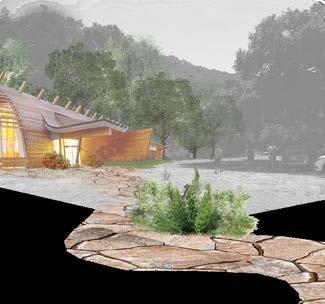
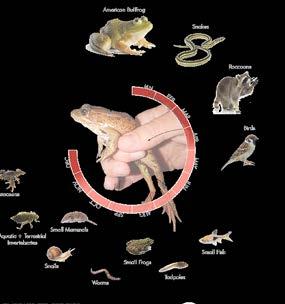
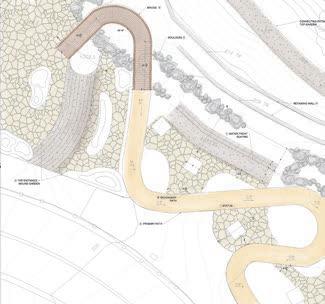
URBAN RESTORATION 03 ADDED VALUE 04 page 18 page 24 ECOLOGICAL + CULTURAL RESILENCY 02 page 12 NATIVE LANDSCAPES 01 page 4
01
NATIVE LANDSCAPES
Waterwise Community Center at Chino Basin Water Conservation District
+100 page public document

Analysis + Research
• Data Collection Design Strategies
• Analog Drawings
• Illustrator
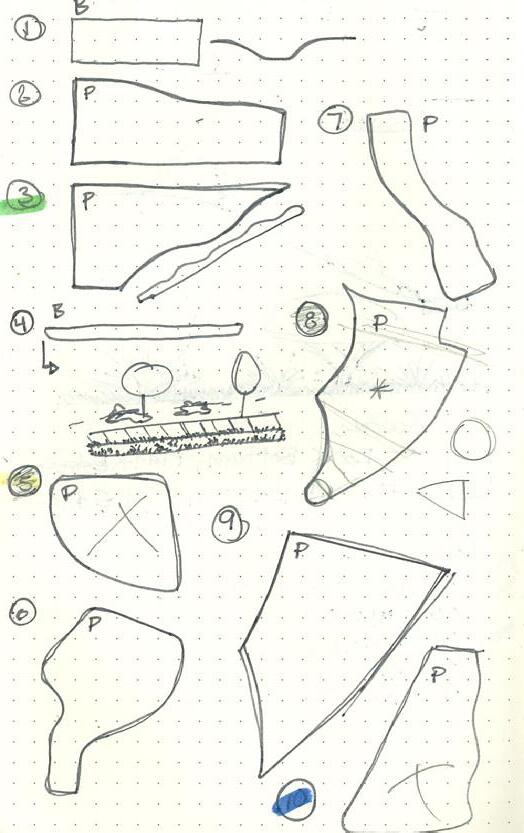
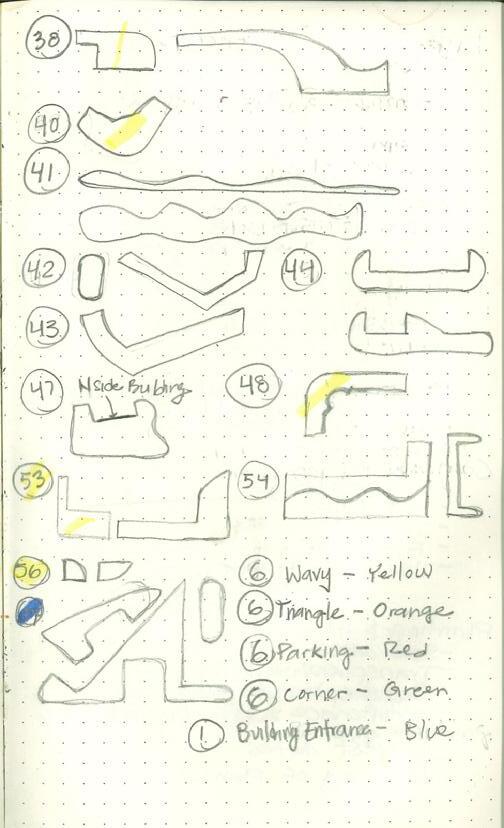
SLOPES
Scale
•Steep : 20% +
Areas most Likely Found
•Paths
•In between homes
•Alleys
•Parks
Design Considerations
•Erosion control
•Clumping and deep rooted plants
•Room for large shrubs and trees
PARKING LOTS
•Large : Over 500 sqft.
Areas most Likely Found
•Businesses
•Public Spaces
•HOA O ces Scale
Design Considerations
•Oppourtunity for bioswales
•Trees for shades (evergreen)
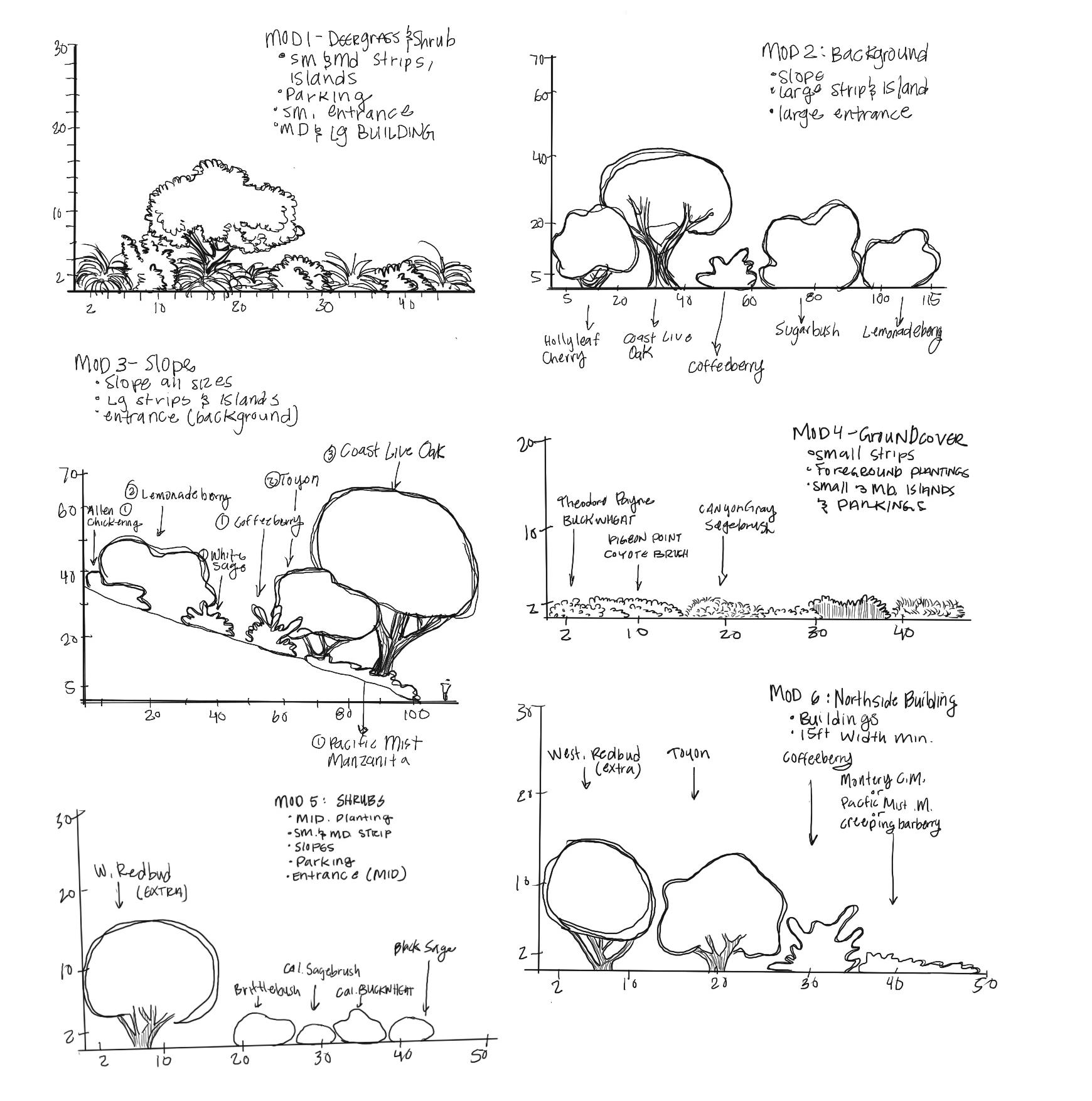
Analog Sections + Conceptual Design
CALIFORNIA NATIVE LANDSCAPES
for commercial, institutional, and municipal sites
• Objective : to create attractive and impactful designs that maintain relatively low maintenance and low water demand in comparison to tradition turf.
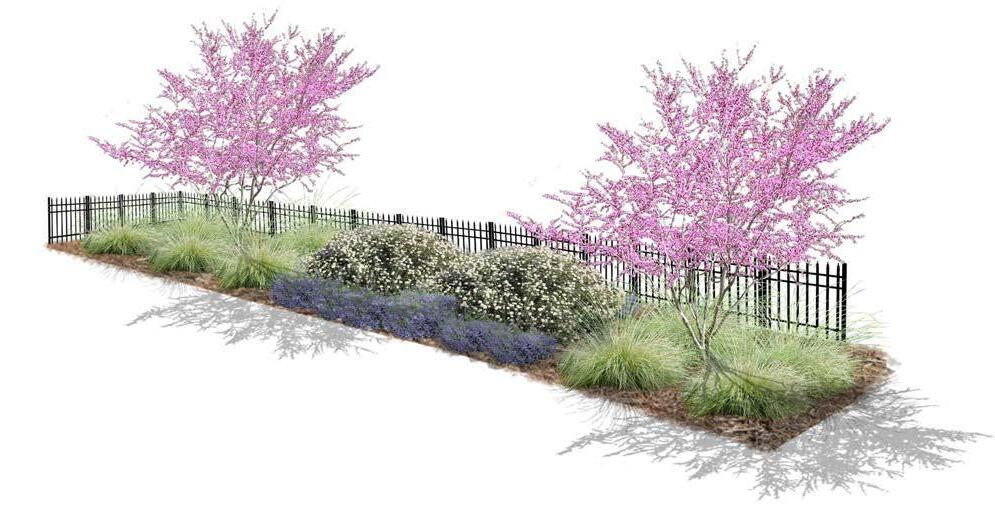
COMPACT COMMERCIAL PLANTER Perennials + Pollinators INSTITUTIONAL
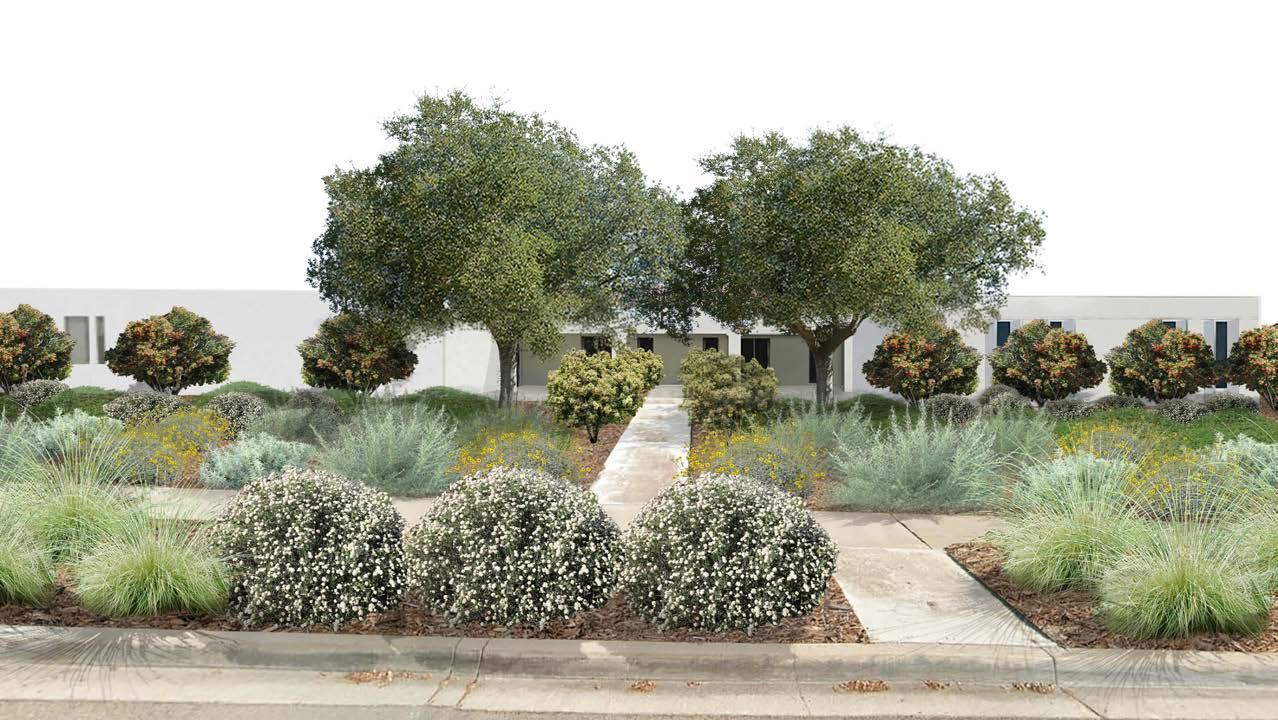
BUILDING ENTRANCE
Oak Woodland

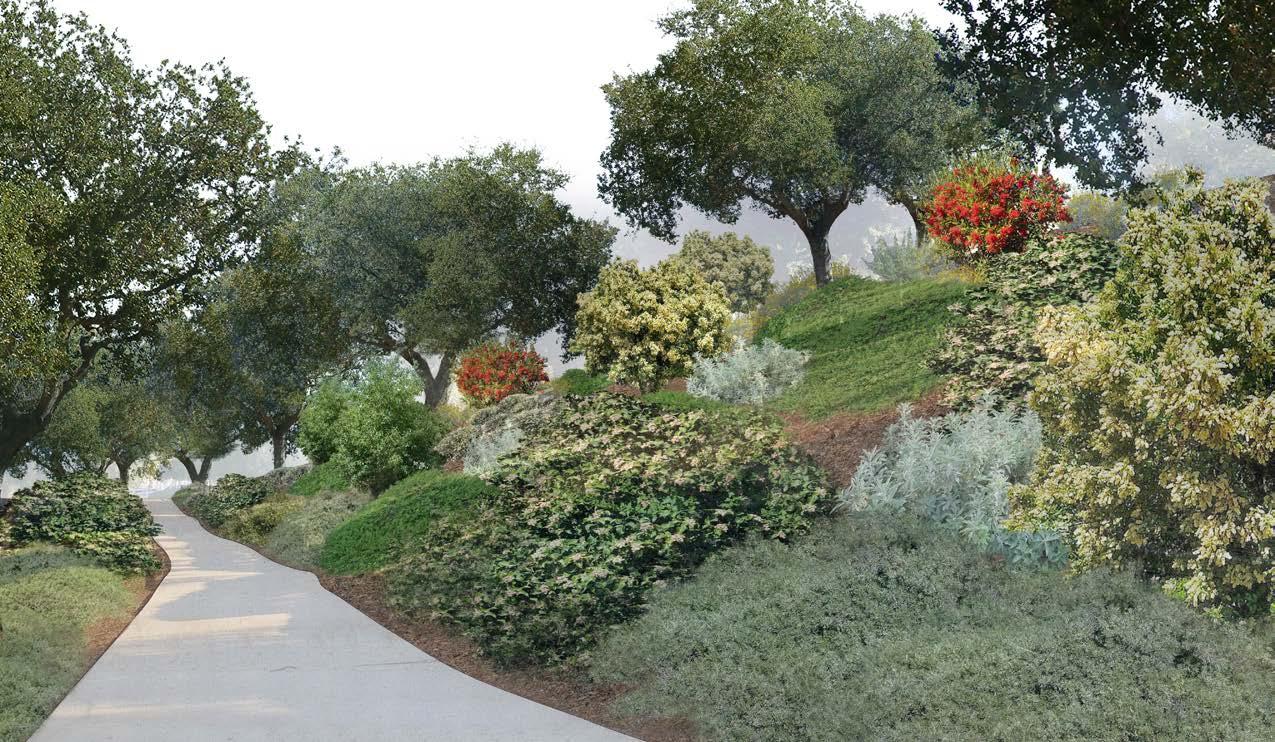
PUBLIC SIGNAGE / CORNER ENTRANCE Native Shrub Mix PUBLIC WALKWAYS Erosion Control
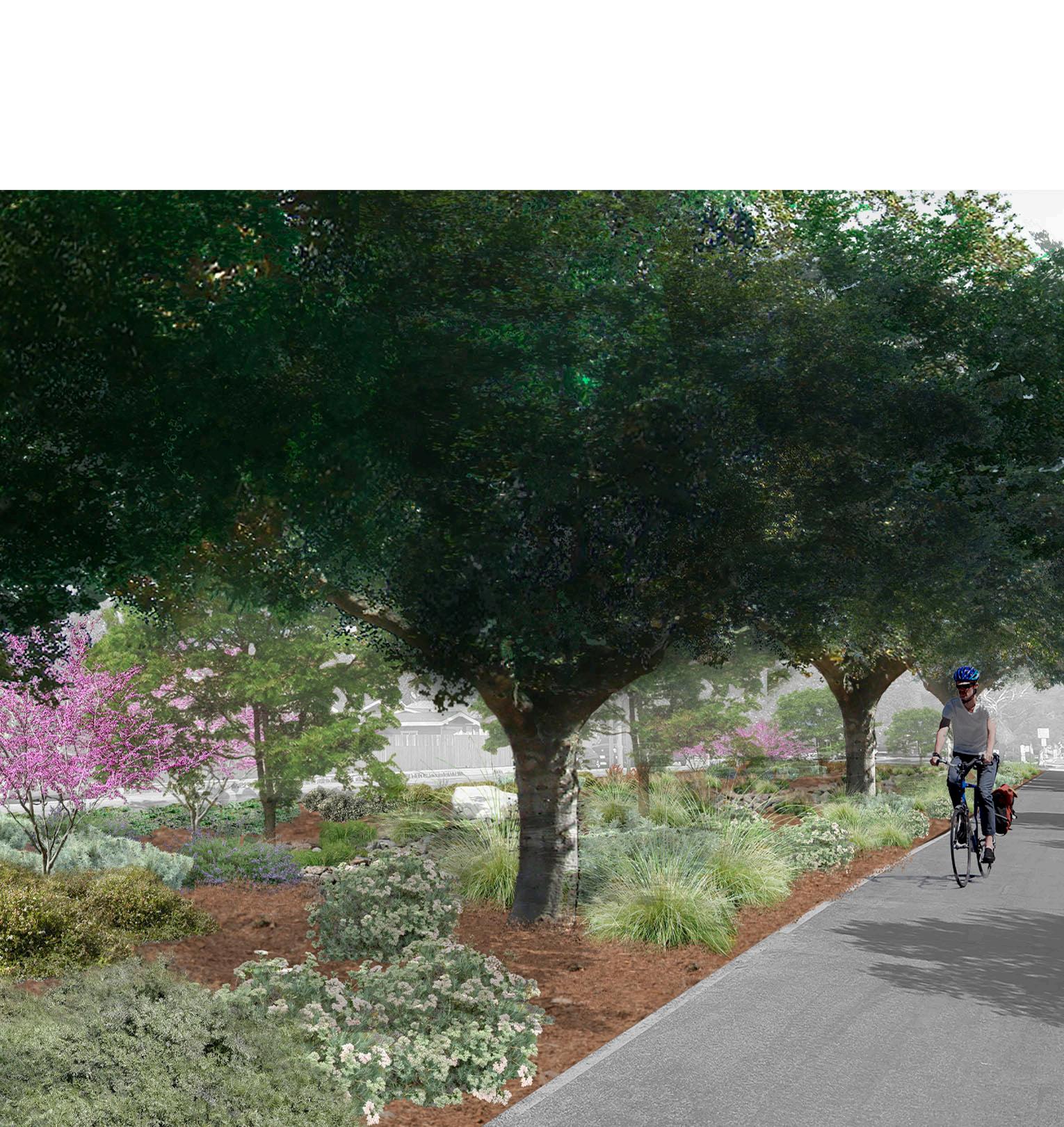
STORM-WATER CAPTURE + FILTRATION
• Objective : to design an inviting and relatively low maintenance, landscape for an active public bike trail, while demonstrating storm-water capture using local native plants.
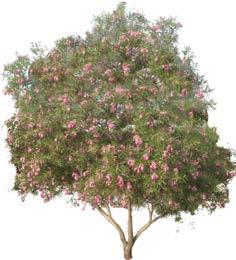
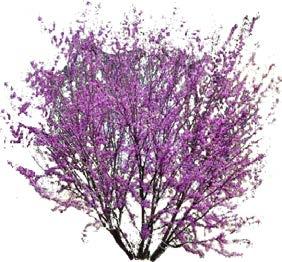
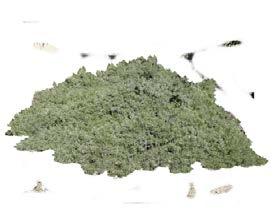
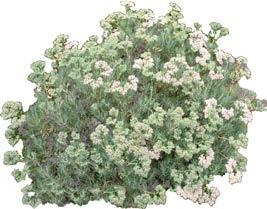
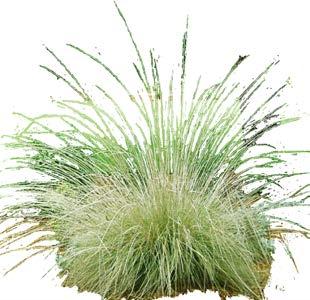
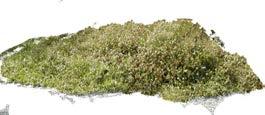
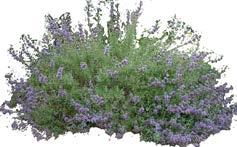
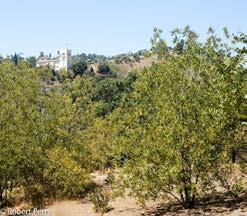
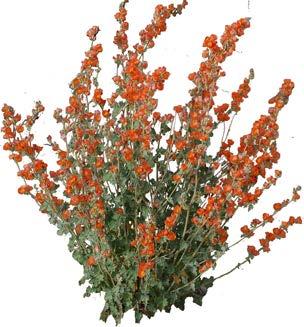
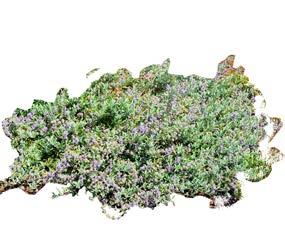
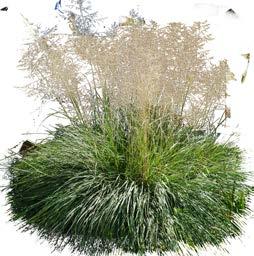
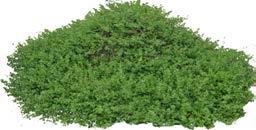
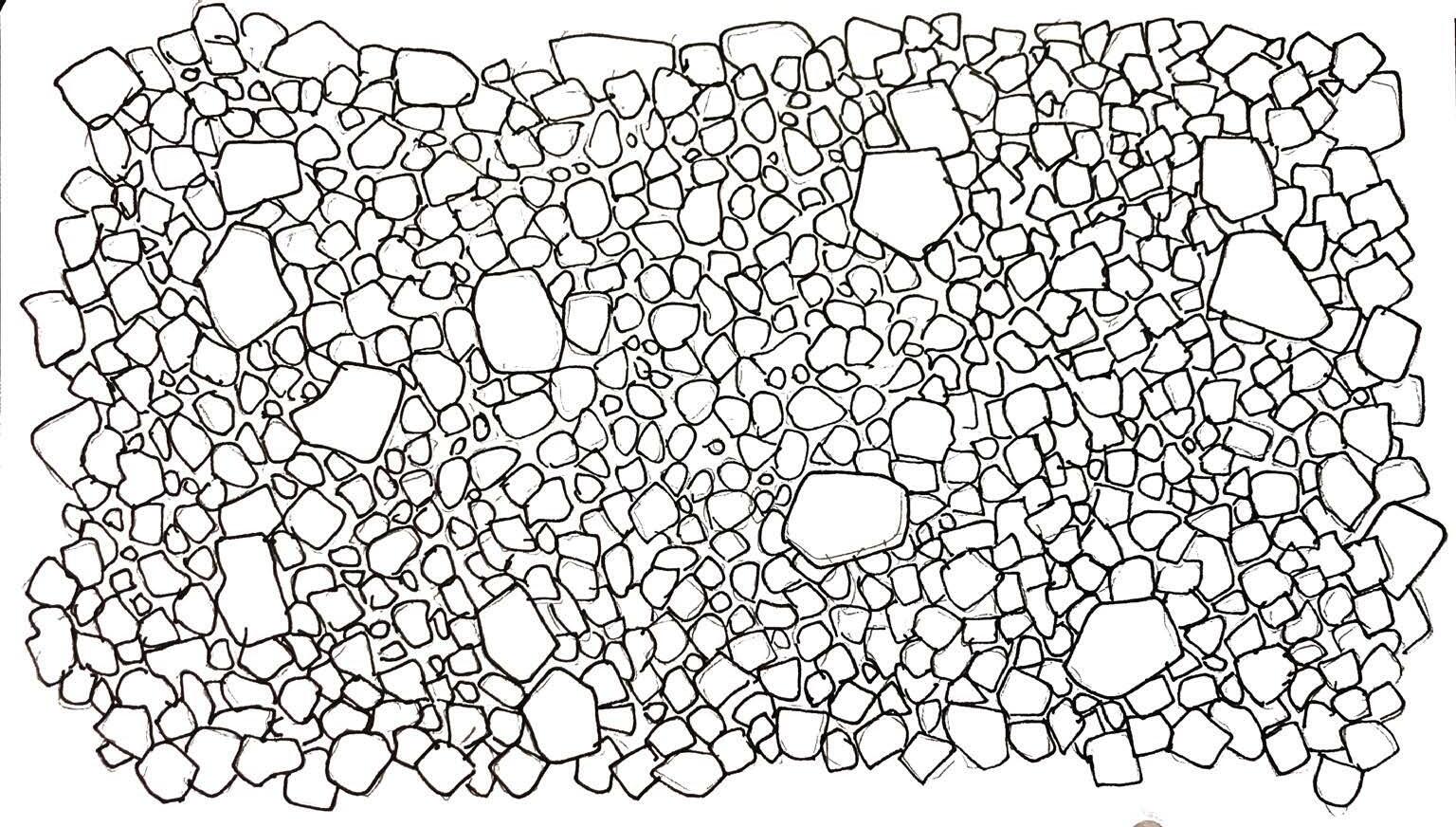

SMB SMB SMB SMB SMB SMB SMB SMB SMB SMB SMB SMB ACG ACG ACG ACG ACG ETP ETP ETP ETP ETP ETP ETP Spa Spa Spa Spa Spa Spa Spa Ef Ef Ef Ef Ef Ef Ef SAC SAC SAC SAC Ea Ea Ea Ea Ea Ea Ea Ea Ea Ea Sa Sa Sa Sa Sa Sa Sa Sa Sa Sa Sa Sa Sp Sp Sp Sp Sp Sp Sp Sp Sp Sp Sp Sp Sp Sp Sp Sp Sp Sp Mr Mr Mr Mr Mr Mr Mr Mr Mr Mr Mr Mr Mr Mr Mr MrMr BBP BBP BBP Co Co Co Ro Jc Jc CI Qa Qa Qa Qa 0’ 15’ 30’ 60’ SCALE : 1” = 15’ - 0” AT 11X17 PRINT N Botanical name common name picture Cercis occidentalis western redbud 10’ 10’ - 15’ x 10’ - 20’ 1, 5 or 15 gal Eriogonum arboresence Santa Cruz Island buckwheat 5’ 3’ - 4’ x 5’ - 6’ 1 gal Sphaeralcea ambigua desert mallow 4’ 3’ - 4’ x 3’ - 5’ 1 gal Heteromeles arbutifolia alkalai sacaton 15’ 2’ - 3’ (to 4’ with flowers) x 2’ - 4’ 1 gal Muhlenbergia rigens toyon 5’ 12’ - 25’ x 12’ - 18’ 1, 5 or 15 gal Sporobolus airoides deergrass 4’ 2’ - 4' (to 5' with flowers) x 4’ - 5’ (to 6’ with flowers) 1 gal Salvia ‘Mrs. Beard’ Mrs. Beard sage 6’ 18” - 24” x 4’ - 6’ 1 gal Rhus ovata sugar bush 10’ 8’ - 35’ x 20’ - 25’ 1 gal Salvia apiana white sage 5’ 3’ - 4’ x 4’ - 5’ 1 gal Salvia ‘Allen Chickering’ Allen Chickering sage 6’ 3’ - 4’ x 4’ - 7’ 1 gal Eriogonum fasciculatum 'Theodore Payne' Theodore Payne buckwheat 8’ 6” - 12” x 3’ x 6’ 1 gal Chilopsis linearis desert willow 15’ 15’ - 30’ (rarely) x 15’ - 20’ 1, 5 or 15 gal Aretmisia californica 'Canyon Gray' canyon gray sagebrush 8’ 15” - 18” x 8’ - 10’ 1 gal Southern California black walnut 25’ - 35’ x 25’ - 35’ 1, 5 or 15 gal Juglans californica var. californica 15’ width on plan size h x w recommended purchase size pigeon point coyote brush 1 gal Baccharis pilularis ‘Pigeon Point’ 8’ 18” - 24” x 6’ x 9’ Co Ea Spa Sp Ha Mr SMB Ro Sa SAC ETP Cl ACG Jc abbreviation BPP
• Objective : this document was created to inform landscape professionals how to design, install and maintain native landscapes as well as their many benefits.
WHAT IS A CALIFORNIA NATIVE PLANT?
AND WHY DO THEY MATTER FOR BUILT LANDSCAPES?
When working with landscape professionals we often nd that there is a signicant amount of confusion about what exactly a California native plant is. For the purposes of this specic document, we are using the term “California native plant” as follows.
A CALIFORNIA NATIVE PLANT IS ONE THAT:
1. Evolved within California or the California Floristic Provence, which includes part of Baja.
2. Has been in California since long before Europeans arrived. European arrival began a period where many new plants rapidly began to be introduced to the environment both intentionally and unintentionally.
3. Is different than the general categories such as “California friendly,” “drought tolerant,” “low water,” or “waterwise,” which also includes many, many nonnative plants such as lantana, lavender, and rosemary. All plants in this document t into those more general categories AND are California native plants.
Note: In this context, when discussing built landscapes, the term “California native plant” is used as a shorthand to refer to plants that are both CA native AND are appropriately selected for the climate and micro-climate in which the built landscape area is located. For example, redwoods are native to California, but are not part of what we are referring to when we mention native plants for our local southern California landscapes. Similarly, alder trees grow locally, but along streams with consistent water availability. They are native but are also not what we are referring to for most built landscapes.
• Story boarding for package layout.
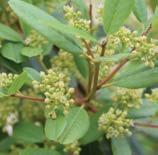
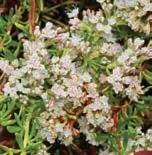
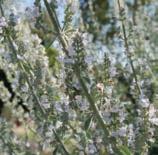
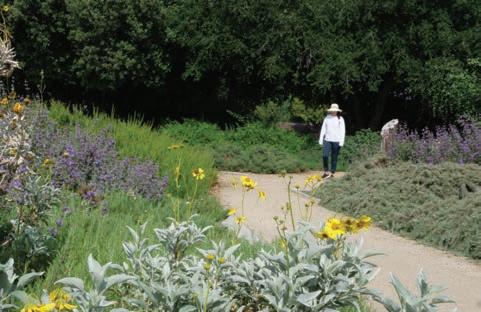
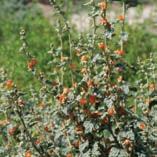
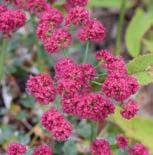
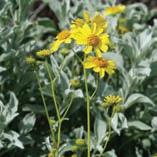
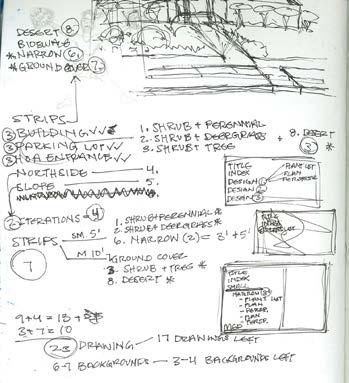
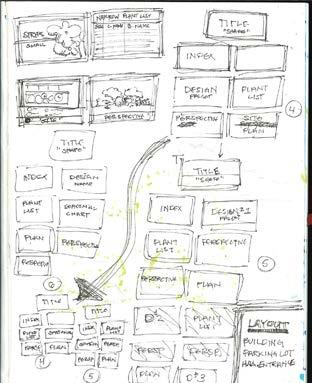
Waterwise Community Center 6 PUBLIC EDUCATION + COMMUNICATION
WHAT IS 1” OF WATER?
This refers to a volume of water being applied to an area of landscape equal to 1” of rain falling on that area. It is just like 1” of solid water was somehow suspended in the air over that area, then allowed to trickle down into the soil.
IMPORTANCE OF WATERING RINGS
Watering ring 1” to 2” above top of root ball
When 1” of water is applied, it will wet the soil further down than 1”.
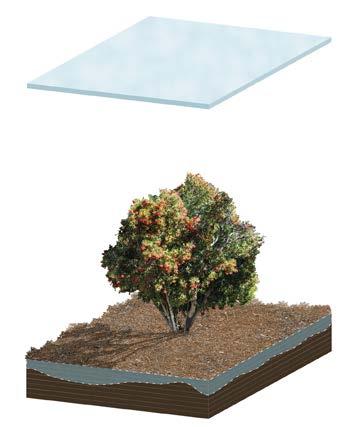
Allen Chickering Sage
Salvia ‘Allen Chickering’
3 ft4
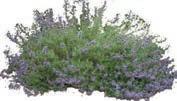
6 ft - 10 ft+ (if unpruned)
Plant Type : Shrub, CA Native Habit : Mounding
Growth Rate : Moderate / Fast
Foliage Flower color LEGEND
Sun + Soil Benefits + Uses
Sun Needs :
•Full sun
Soil Adaptations :
•Well-draining soil
•Clay soil Exposure Adaptations (once established) :
•Drought Uses :
•Fragrant foliage and flowers
•Slopes
•Foliage and flowering accent plant
•Borders Benefits :
•Bees, butterflies, beneficial insects and hummingbirds use
flowers
•Birds eat seeds

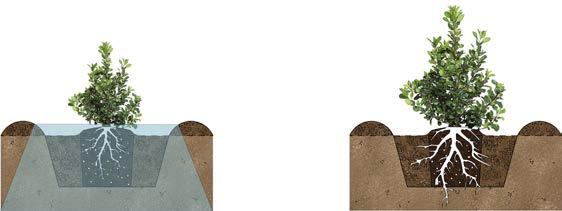
Watering the existing root ball and the surrounding soil (about 3 inches more or less)
Depending on your soil type the water may infiltrate deeper or more shallowly.
Care Guide
Allen Chickering Sage : Establishment Care ( 1 - 2 years )
How to shape your plant for the future?
•Pinch or prune back young plants regularly in the first year to encourage long-term development of a strong bushy structure.
•When newly planted plants reach appx. 12-18”, but before they flower, cut back each young stem by approximately 1/2.
▪ Don’t worry about sacrificing flowers the first year, you will be repaid with more flowers and a longer-lived better looking plant for many years in the future. Young plants allowed to develop too many long flower stocks without this pinching back commonly break apart under the weight of their own flowers
Plant Profile (over 30 profiles created)
Recommend Size to Plant
•one gallon
Tips /Advice
•In addition to the special pruning advice to the left, also be sure to follow the fall pruning
How much / often to water during establishment?
•If hand watering: provide 3-5 gallons once per week
Roots begin to grow and spread outside of the root ball to the surrounding soil )KAEP(GNIRPS REMMUS WINTER FALL Bloom Cycle
Foliage + Bloom
Foliage Character :
•Evergreen
Foliage Color :
•Pale green
Flower Color :
•Purple Flower Season :
•Spring
•May get small
rebloom in fall
•If on a sprinkler or “drip grid” irrigation system, provide 1” of water (equivelant to it raining 1”) once per week.
Ongoing Care For Established Plants
Fall Pruning (Recommended)
•Remove dead seed heads in the Fall, cutting each branch not only below the dried flowers, but also removing 1/3 to one half of that stem’s leavy growth. This helps control size, promotes bushier growth, and leads to more flower stems.
Early Summer Pruning (Optional)
•If desired, after spring / early summer flowering, can be headed back by removing as much of the new-ish growth as desired
•Doing so immediately after the first bloom encourages a potentially larger late-summer / fall rebloom, but sacrifices the development of seeds for wildlife to eat, so decide which is your priority!
•Watering
•We
Guide for further details, including how to provide 1” of water.
waterwisegardenplanner.org/wateringguide
•Recommendations are a baseline - adjust to your site based on your observations
Tips /Advice
•Avoid fertilizer (organic or synthetic)
•Consider leaving some of the pruned dry seed heads in the garden for bird food.
• Story boarding for profile layouts.
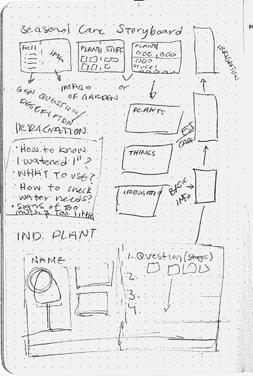
ft
recommendations below, even for young plants.
often and how much to water?
3-4 weeks water deeply.
watering = providing the equivelant of a 1” rain event over the entire root system of the plant, not concentrated at
How
•Every
•Deep
the base.
Low
Schedule Native
1
highly
reading
recommend
our Watering
Informative Diagrams
02
ECOLOGICAL + CULTURAL RESILENCY
CAL POLY POMONA CAPSTONE THESIS
partnership with the Nature Conservancy at the Dangermond Preserve in Lompoc, CA
Precolonial Timeline of Chumash Tribe

PALEOINDIAN PERIOD
13,000 to 8,500 Before Present
Seed-milling stone, chert tools, beads, and a fish-like stone
Climate was cool and moist, supporting extensive pine forests
Oak Grove Era also know as the "Millingstone Horizon" due to the abundance of milling stones
Small groups, collecting shellfish and harvesting wild seeds
Shellfish-gathering continued to supply most protein, and hunting and fishing were relatively unimportant.
INITIAL EARLY PERIOD
8,500 to 6,500 Before Present
pygmy mammoths

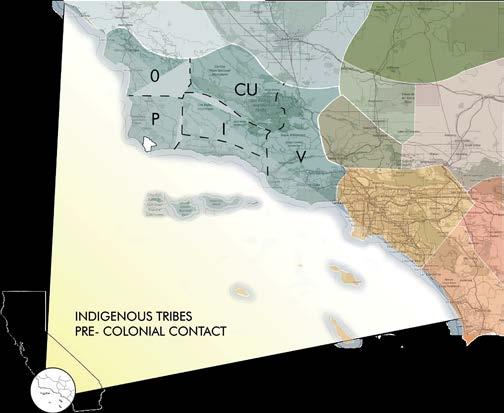
Most rock art found today was created during this period

Use of shell bead money
Population increase and changes in the tool kit
Fishing and sea mammal hunting became more important
Selective burning
Invention of atlas (spear, throwing stick) allows for hunting large animals
TERMINAL EARLY PERIOD
5,000 to 3,200 Before Present
Two-thirds of the Chumash population lived near the coast Use of tomols (canoes)
MIDDLE PERIOD
3,200 to 800 Before Present
LATE PERIOD
800 years Before Present to Missionization
People speaking begin a "Proto-Chumash"
Climate of the Santa Barbara region became warmer and drier
DESIGN WORKFLOW
• Based on gathered research from the timeline and ethno-botanical studies I began brainstorming ideas of spacing, planting and programming.
Conceptual Drawings
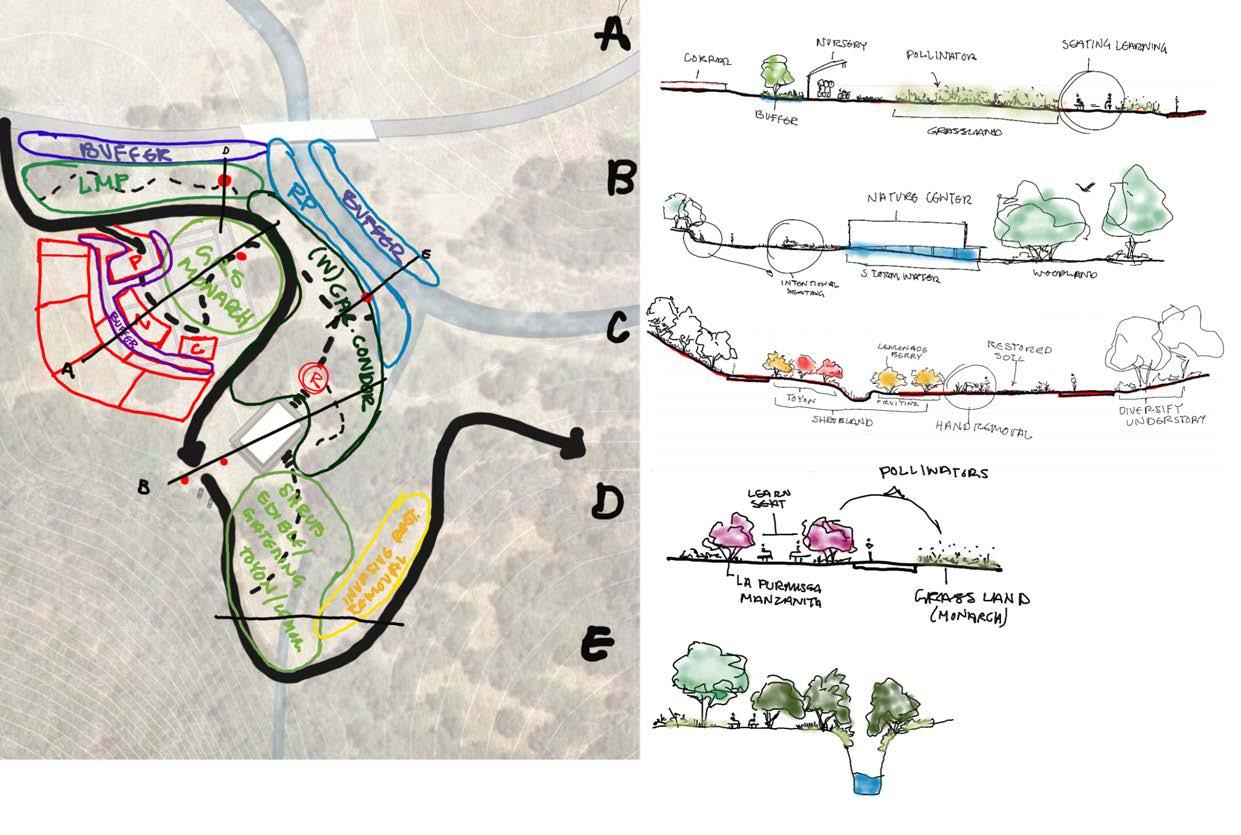
• All design and programming is based upon ecological education and interactive learning. The following diagrams explore the cultural uses of native plant communities found on site
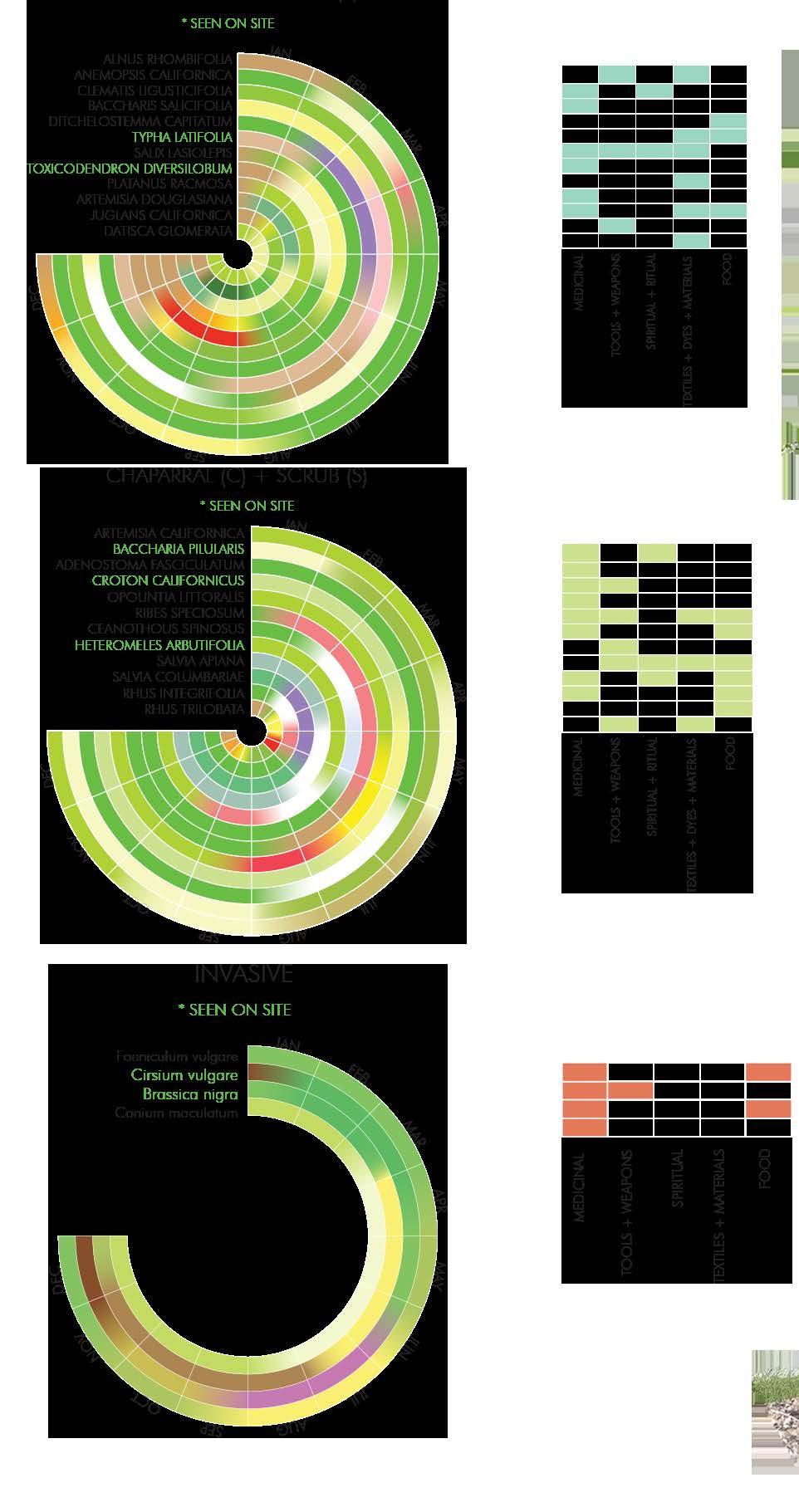
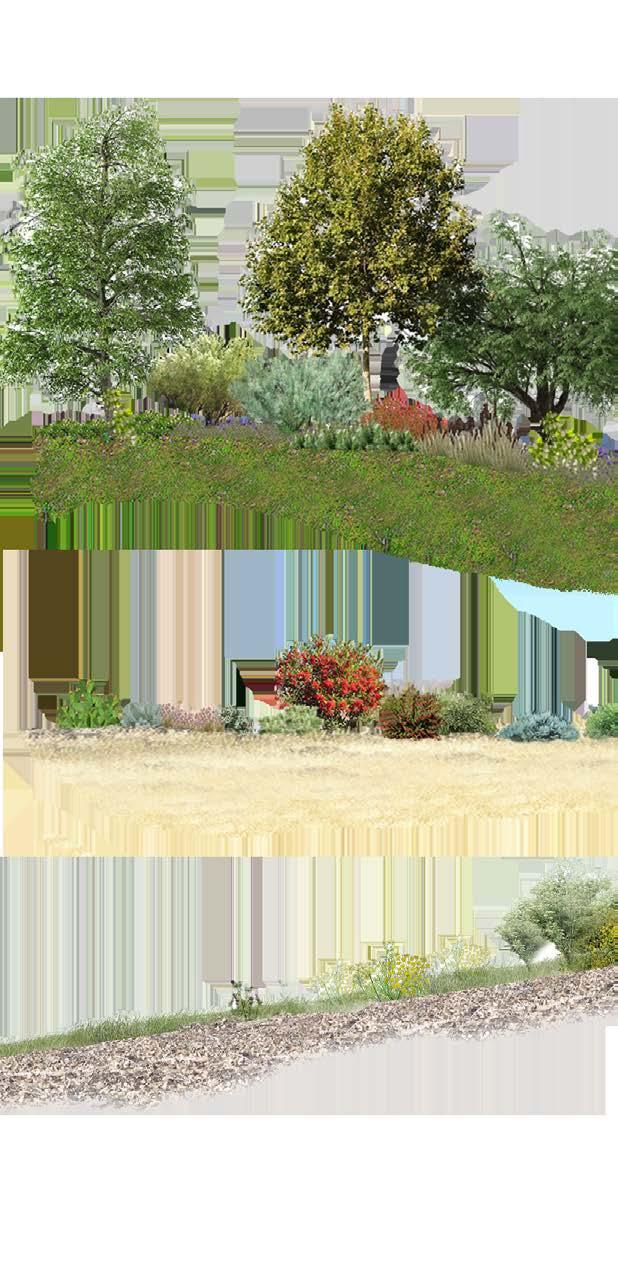
Ethno-botanical Studies
ECOLOGICAL + CULTURAL PROGRAMMING
• Objective : the end result of this design includes a nature center. One of the primary goals of the Nature Center is to uplift and highlight the indigenous people’s of the land, the Chumash, rich cultural and ecological history. Programming for such is based off of the previous research displayed.
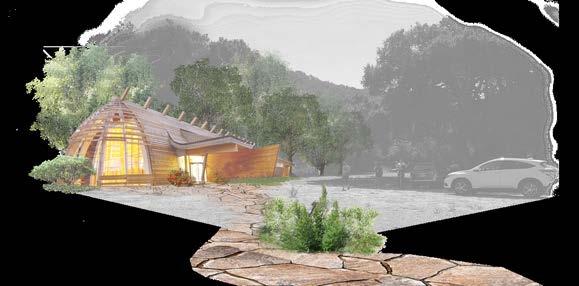
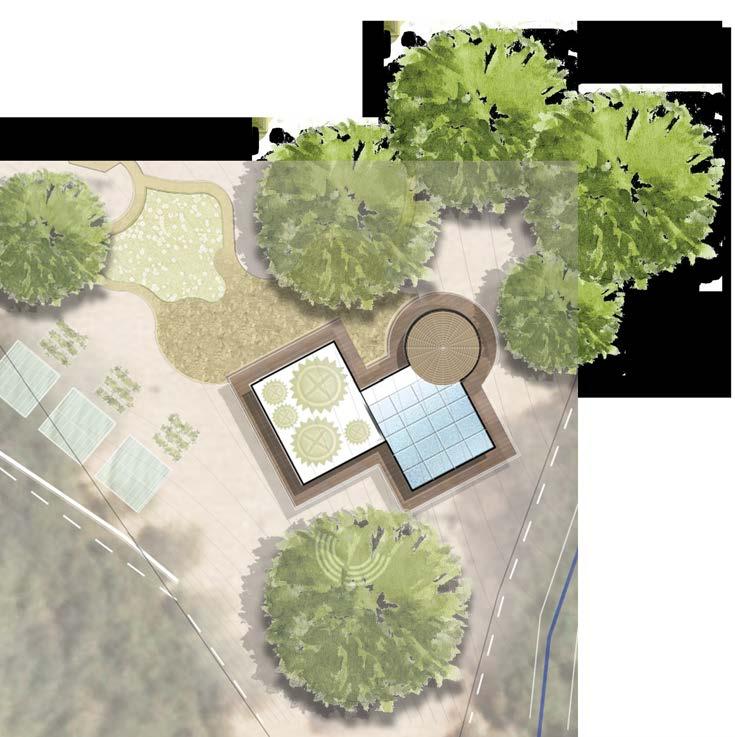
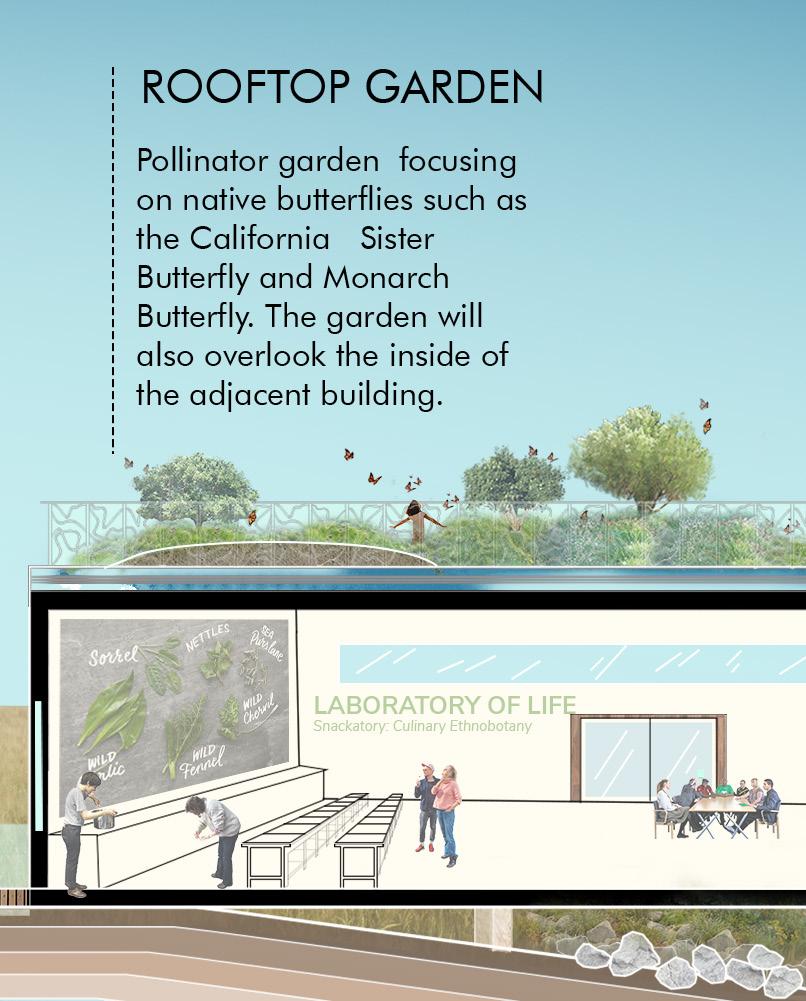

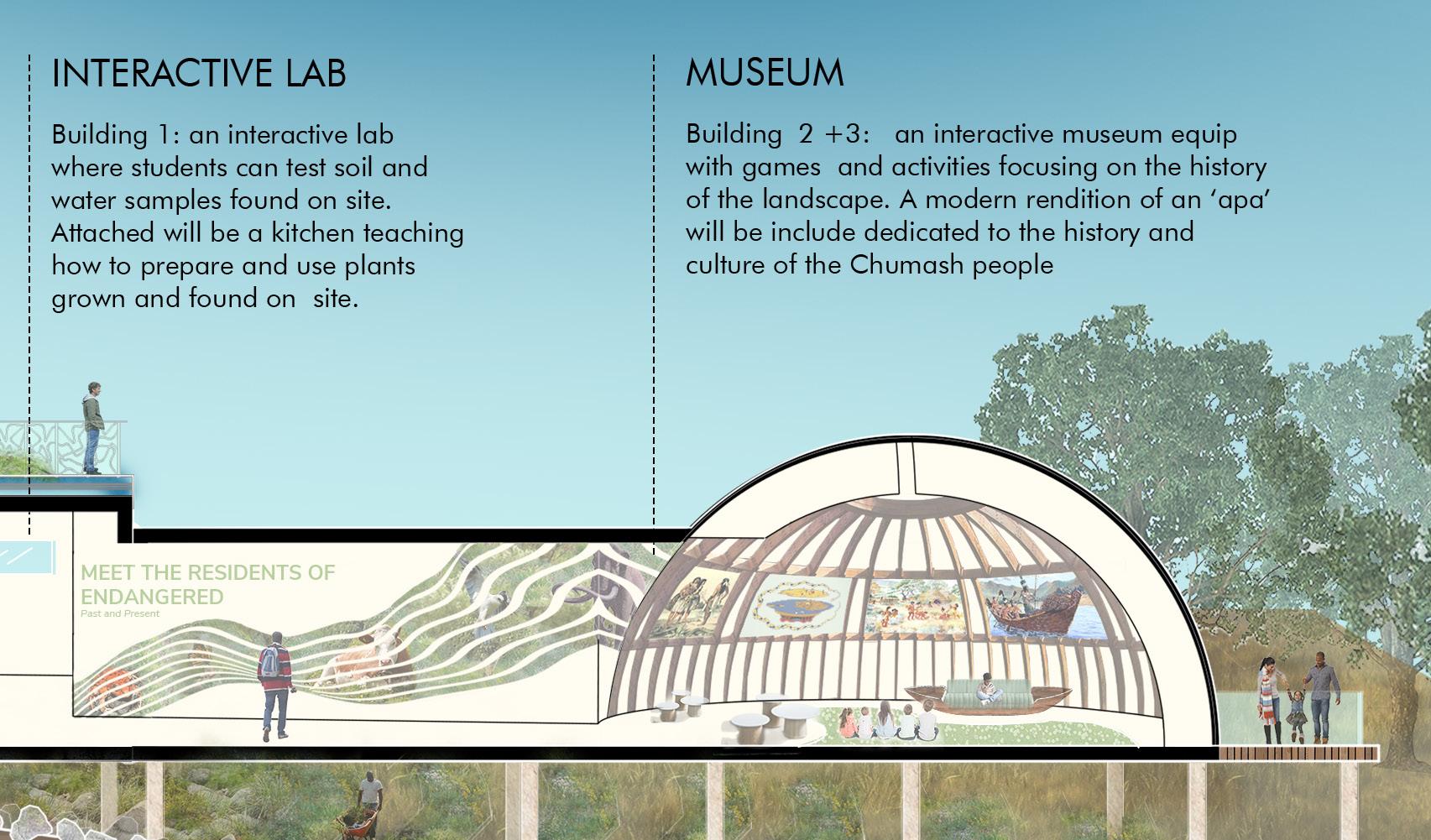
URBAN RESTORATION
CAL POLY POMONA CAPSTONE THESIS : CASE STUDY
Interior Greenbelt Park in San Francisco, CA
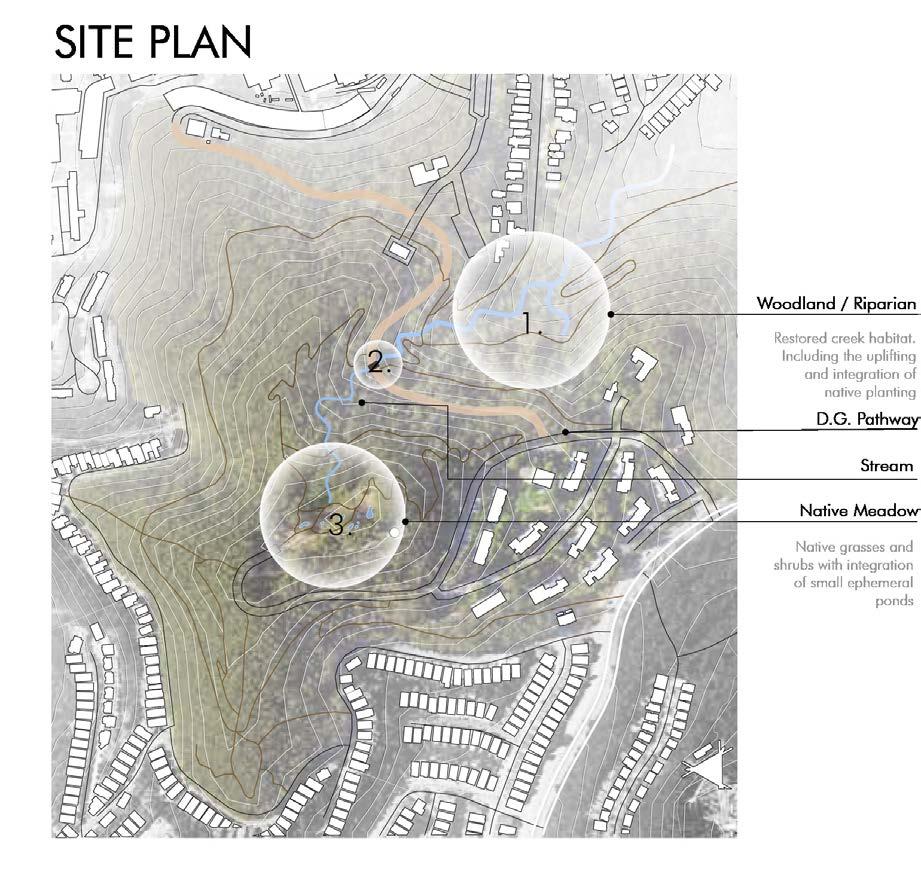
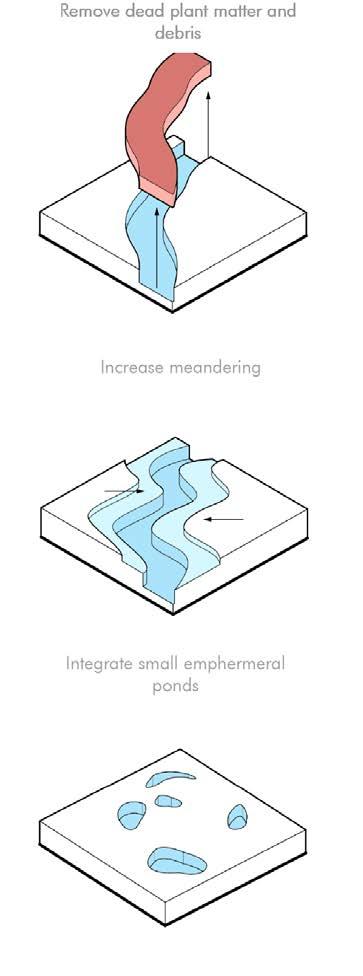
03
Structural Habitat Requirements
Rhino 3D Modeling
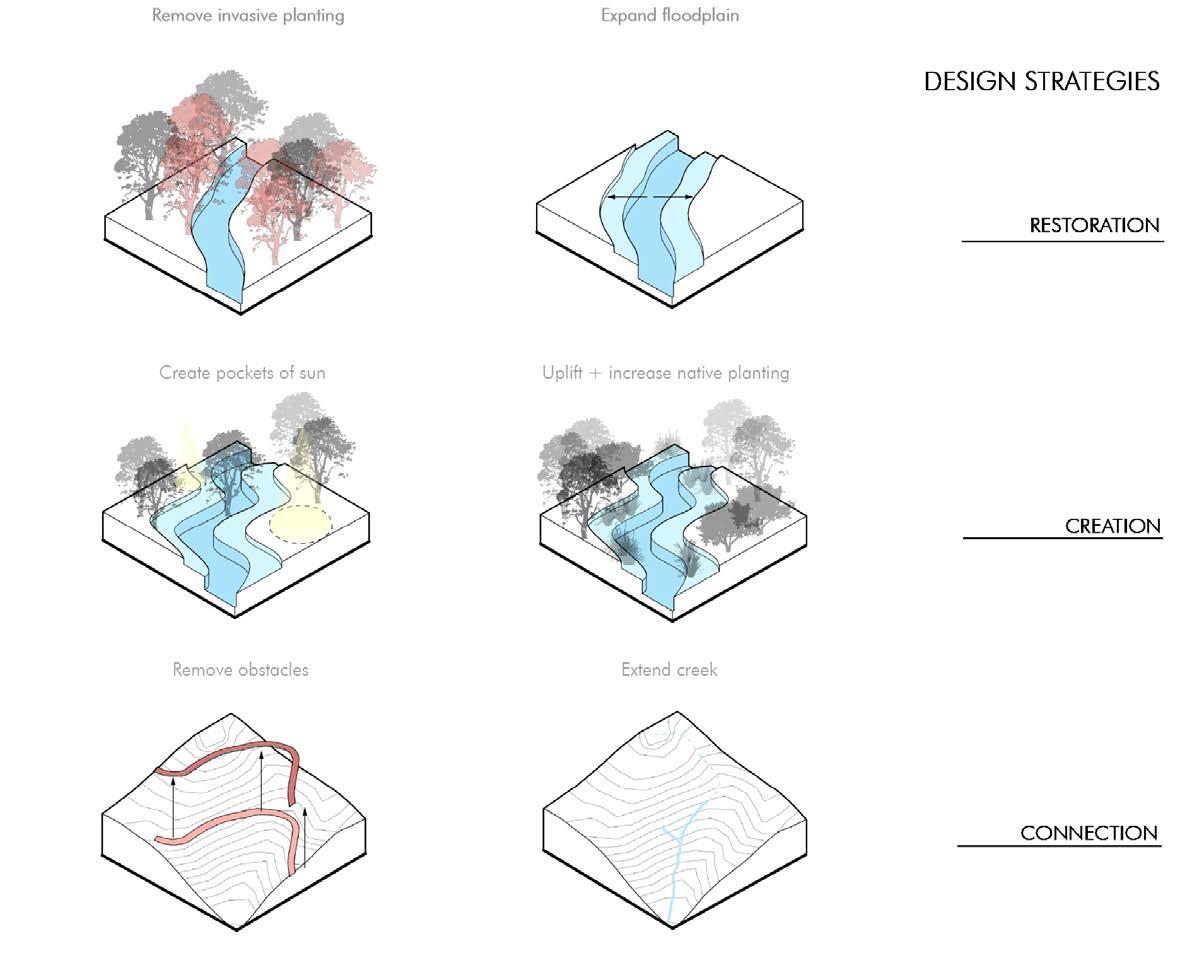
BUILDING NATIVE HABITATS WITH LOCAL COMMUNITY
• Objective : to redesign an existing park, in a highly dense urban setting, in a way that prioritizes local native species and habitat.
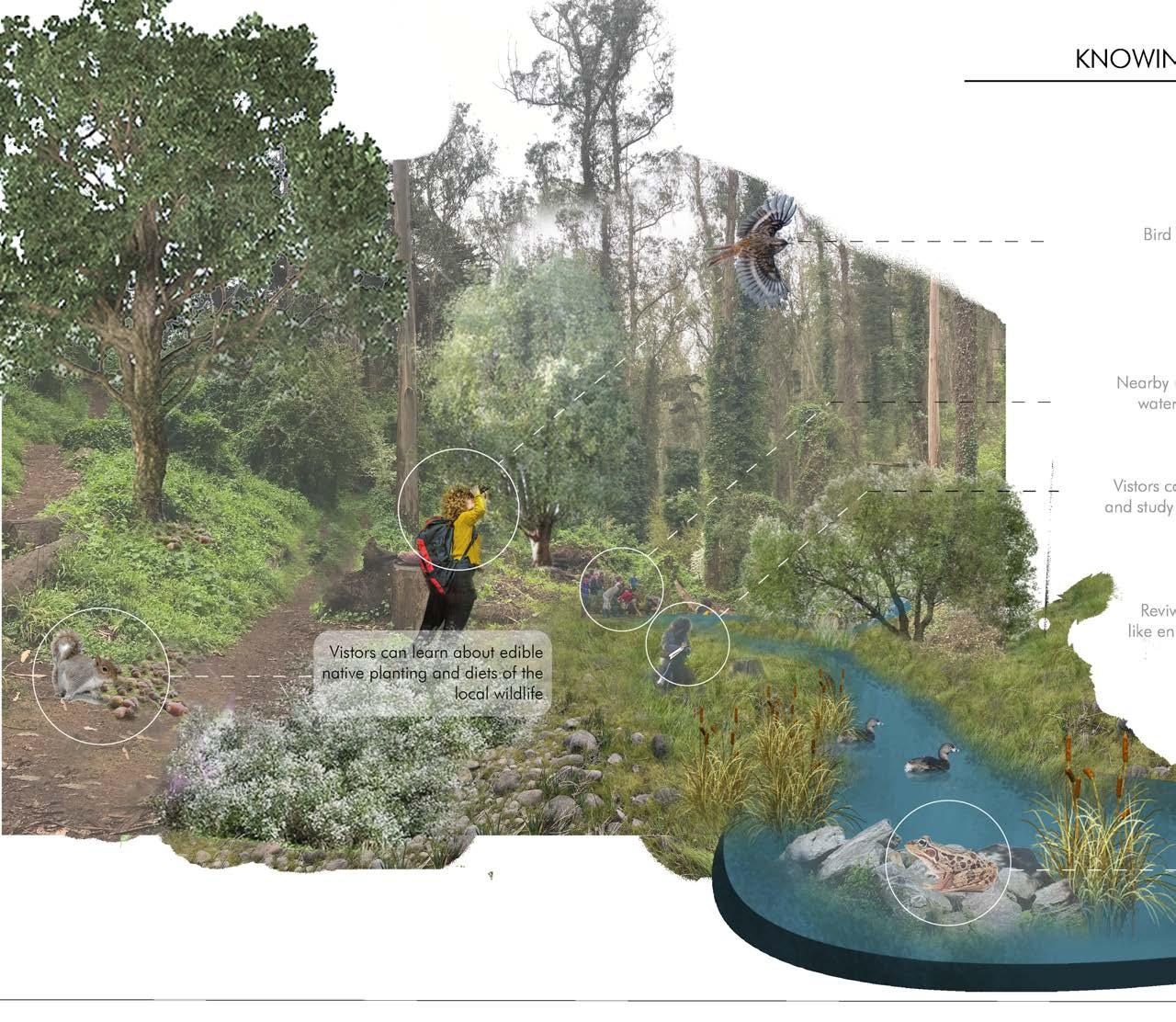
• This collage depicts how the local community can interact and learn from the redesigned site with the uplifted native species (from diagrams to the right)
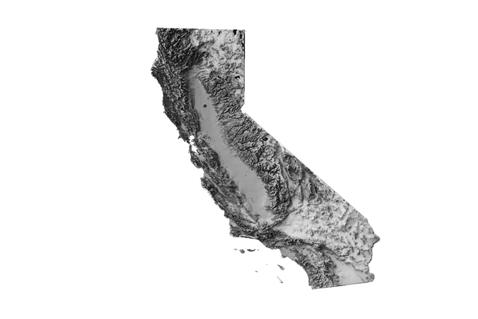
Bird species like the Brown creeper wild let local residents know the health of the forest
Nearby university students can conduct research on water contamination levels and see how natural ecology helps with filtration
Visitors can sit upon reused wood stumps to observe and study the environment through artistic endeavors like sketching Revived creek provides home for lost biodiversity like the endangered red legged frog.
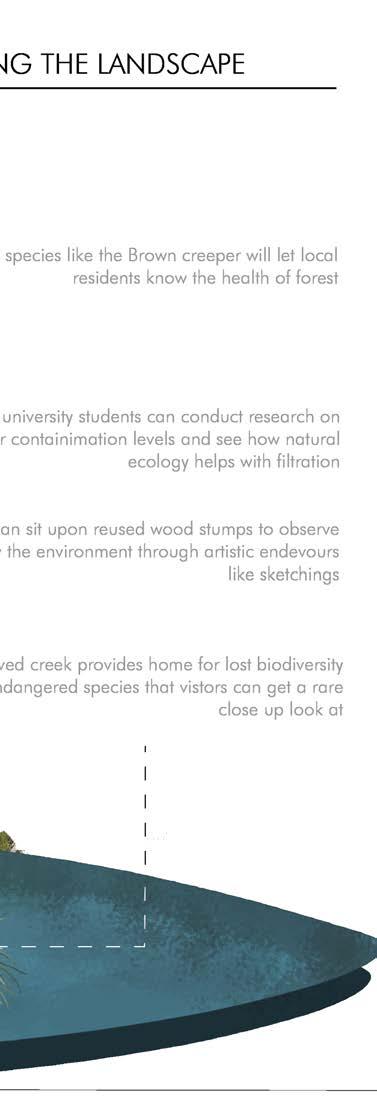
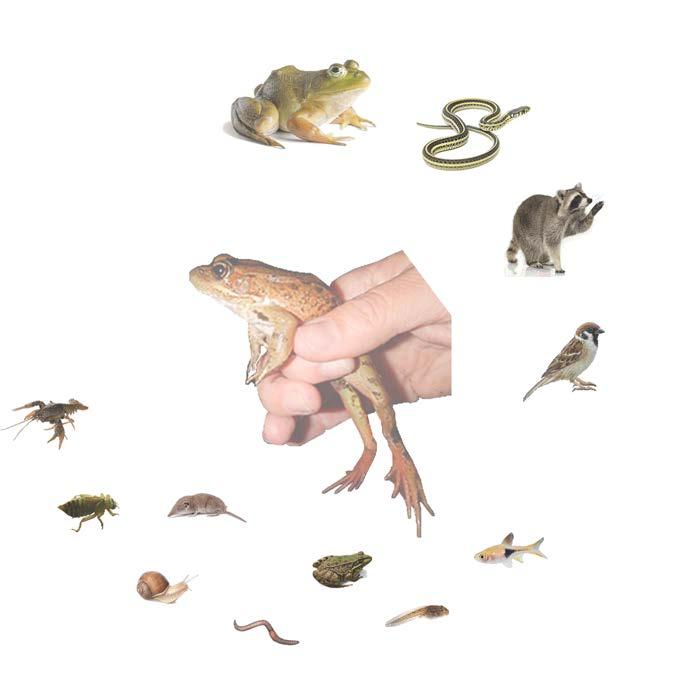
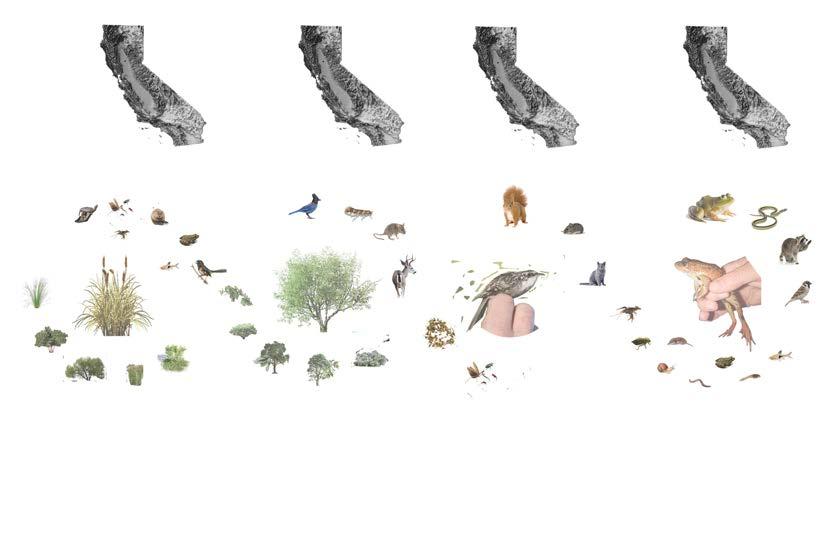
USERS COMPANONS SU E R S COMPAN ONS ERP D A T O R S PREY R E D T O R S PREY HABITAT BUILDERS HABITAT INDICATOR HABITAT DIVERSITY Turtles Insects + Invertebrates Crustaceans Muskrats Frogs Fish Birds Birds Moths + Butterflies Rodents Deer Squirrels Deer Mice Cats American Bullfrog Snakes Raccoons Birds Crustaceans Small Frogs Tadpoles Worms Snails Small Mammals Aquatic + Terrestrial Invertebrates Small Fish Nuts + Seeds Insects Vitis californica Arctostaphylos glauca Quercus spp. Arbutus_menziesii Ceanothus spp. Juncus effusus Sambucus mexicana Salix lasiolepis Scirpus californicus Baccharis pilularis Range Range Range: All Seasons Range: Winter Common Range: Winter Uncommon Range of Northern Red-legged Frog Range of Inter-gradation Historical Range Habitat: meadows, freshwater marsh Community: wetland-riparian Sun: full Moisture: moderate - high Soil: variety Habitat: canyons Community: wetland-riparian, forest, foothill woodland Sun: full, part shade Moisture: low Soil: variety, i.e. clay, serpentine Habitat: woodland, mature forest (breeding) Conservation Status: least concern, but recent population decline Habitat: wetland-riparian Conservation Status: threatened, endangered Threat to brown creeper eggs THREATS TO SPECIES: Deforestation Mono-culture forest THREATS TO SPECIES: Fragmentation, habitat loss Invasive species TYPHA LATIFOLIA Broad leafed cattail UMBELLULARIA CALIFORNICA California Laurel Bay CERTHIA AMERICANA Brown Creeper RANA DRAYTONII California Red Legged Frog BENEFITS: * Predetermination Has a variety of indigenous uses Provides food and shelter for a variety of wildlife BENEFITS: Has a variety of indigenous uses Provides food and shelter for a variety of wildlife MEDICINAL TEXTILES FOOD MEDICINAL RITUAL TOOLS FOOD TEXTILES VON TCO GUA PES D C NUJ JAN LUJ FEB YAM MAR APR B e d gn eP doi BreedingPeriod VON TCO GUA PES CED NUJ JAN LUJ FEB YAM MAR APR VON TCO GUA PES CED NUJ AN LUJ FEB YAM MAR APR VON TCO GUA PES CED NUJ AN LUJ FEB YAM MAR APR DRO PHENOLBODCODOIL + GASTSS CONTAMINANTS FILTERED Range of Northern Red-legged Frog Range of Inter-gradation Historical Range Habitat: wetland-riparian Conservation Status: threatened, endangered THREATS TO SPECIES: Fragmentation, habitat loss Invasive species RP E D A T O R S PREY American Bullfrog Snakes Raccoons Birds Crustaceans Small Frogs Tadpoles Worms Snails Small Mammals Aquatic + Terrestrial Invertebrates Small Fish BreedingPeriod VON TCO GUA PES CED NUJ JAN LUJ FEB YAM MAR APR RANA DRAYTONII California Red Legged Frog Native species diagram
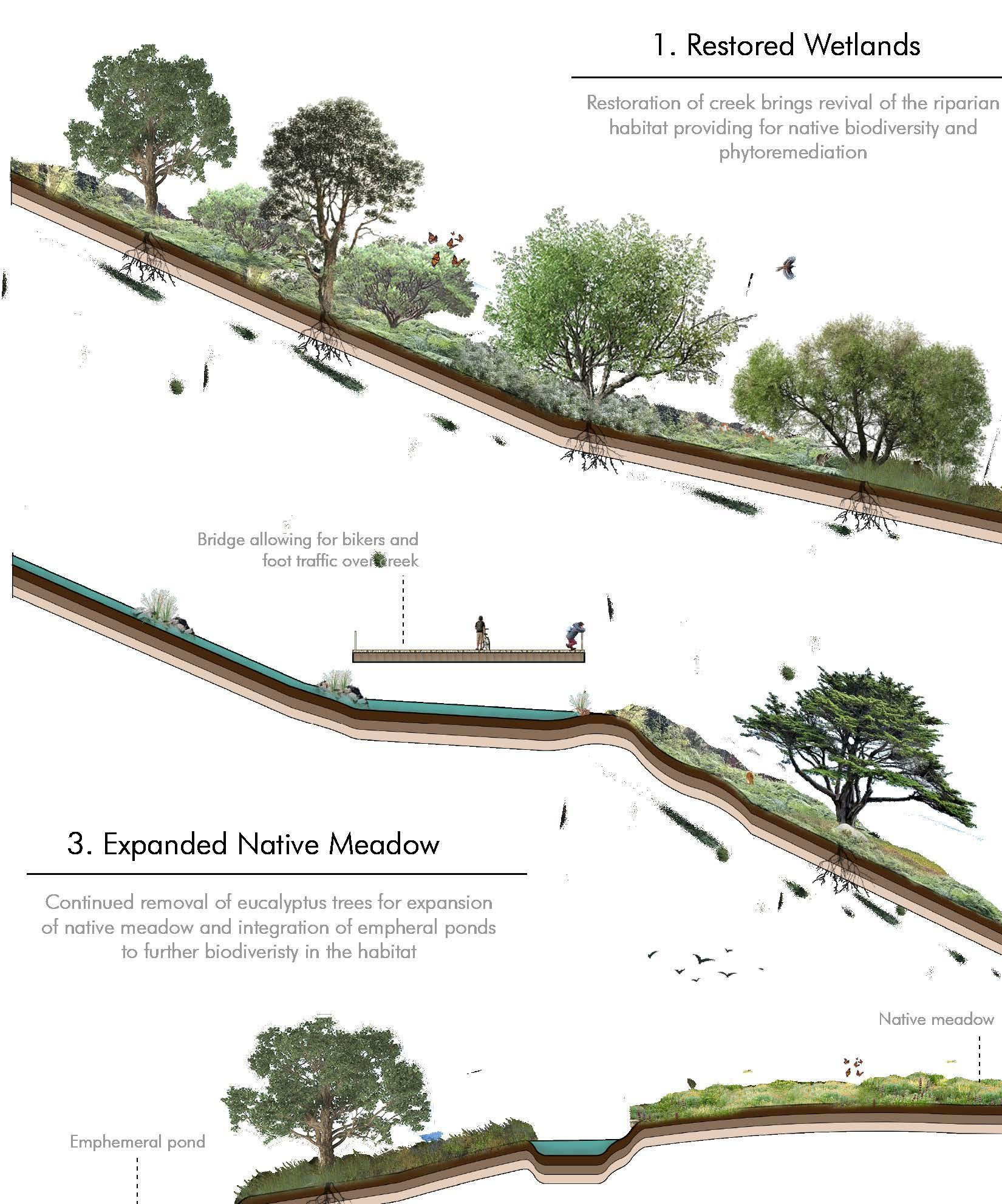
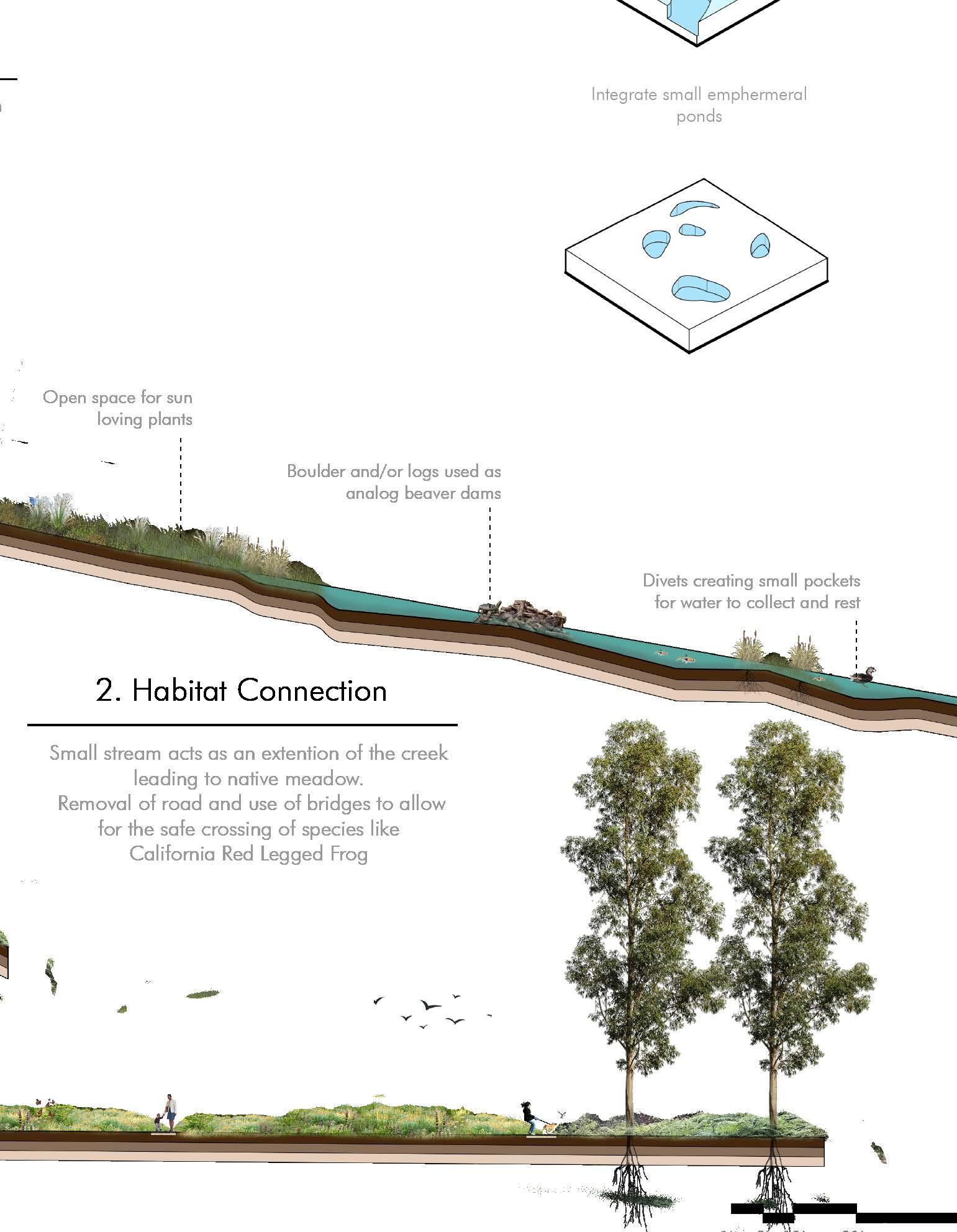
The basis of the design stems from the restoration and re-wilding of the Woodland Creek. Using information from the native species diagramming native plants (both existing and introduced) were selected to optimize biodiversity and build habitat for habitat indicators and endangered species.
Sections
Illustrative

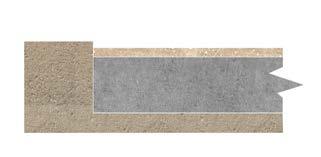
3' 11' 6" Limestone Paver Road / Pathway (decomposed granite) Boulder border edge 15' California Lilac 2" of 1 4 3 8 " open graded stone 4" of 3 4 " - 1' open graded stoneno nes 12" of 1’ 1 2 " open graded stoneno nes Perforated Pipe Compacted subgrade 2' 1'-6" 2"x2" cedar wood 1'-6" 1'-6" 9" 2'-8" 2' Flat top limestone boulder Main Gathering Space 0’ 2’ 4’ 8’ 16’ 0’ 1’ 2’ 4’ 8’ Scale 1/4”=1’-0” Scale 1/2”=1’-0” 2. Seating " Limestone
acidic pollutants,
iron and built up byproducts Material Selection ADDED VALUE AUTOCAD,
04 Parking lot + Seating details
pavers neutralize
removes
CONSTRUCTION DOCUMENTS, HAND DRAWING
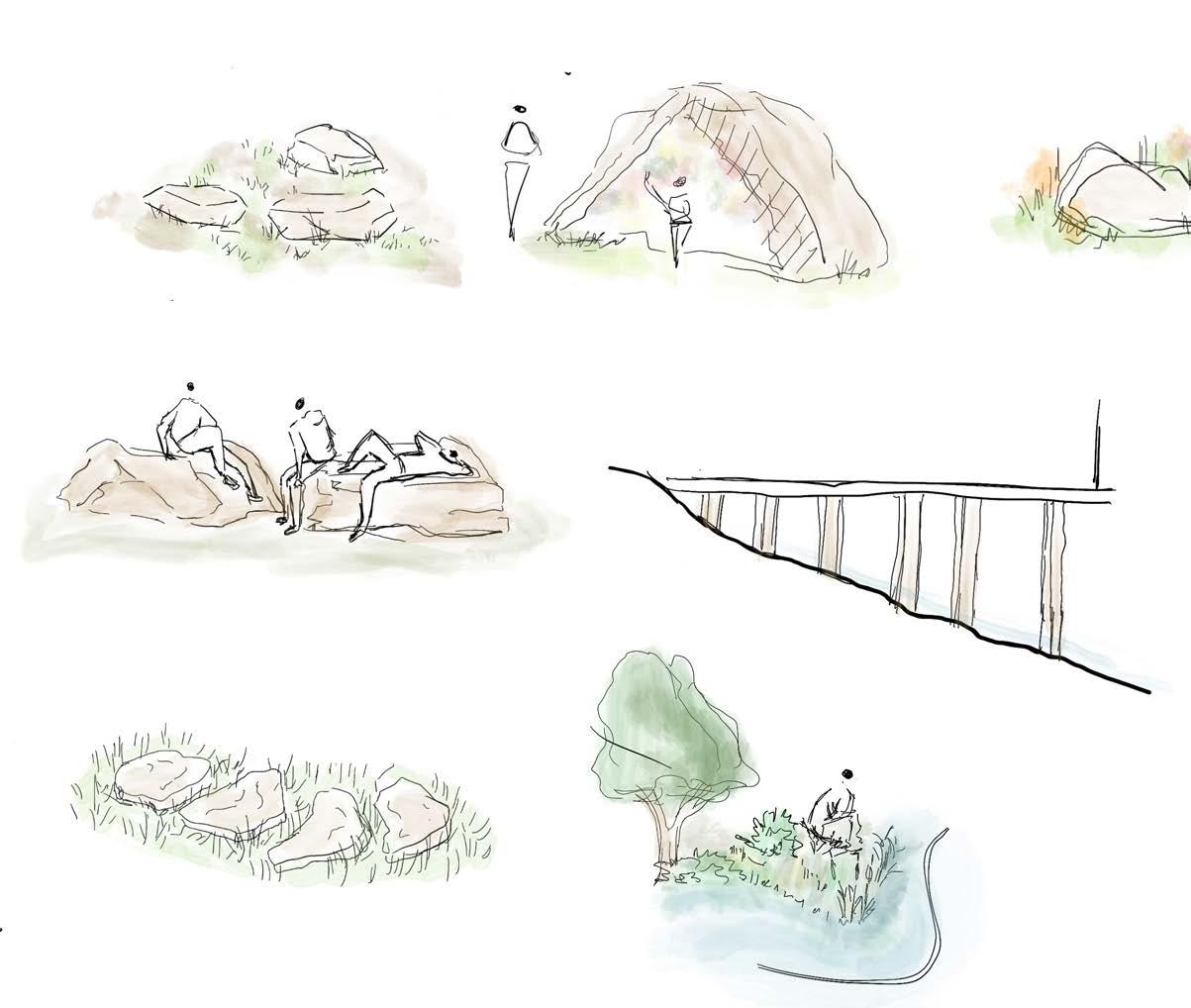
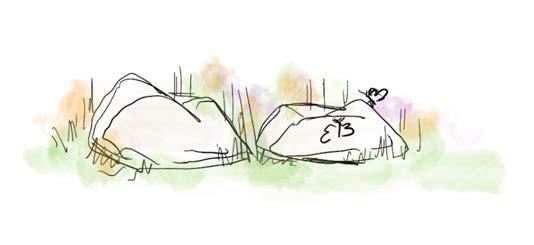
Sketches

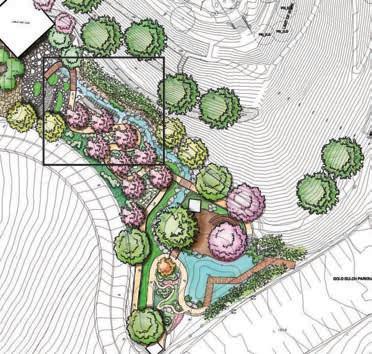
Children’s Garden:
Portals
Enlargement
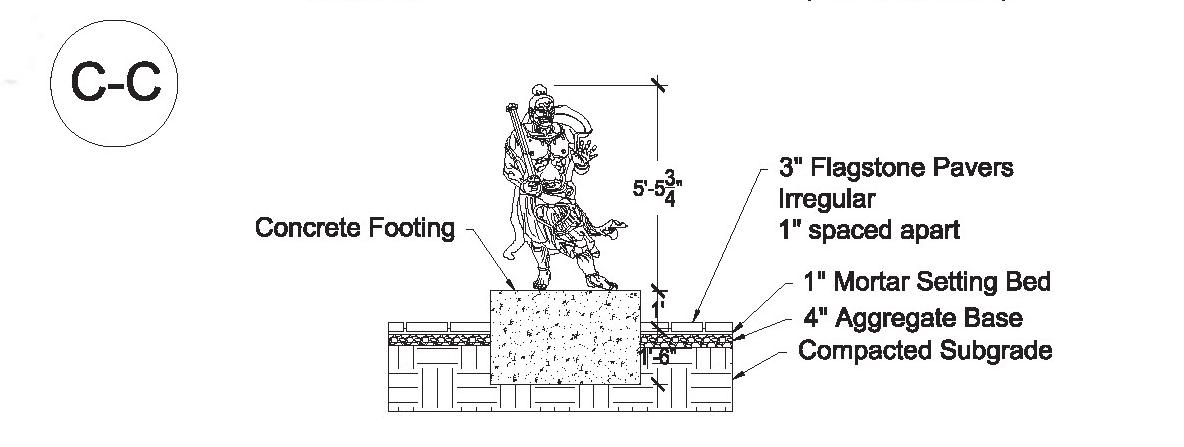
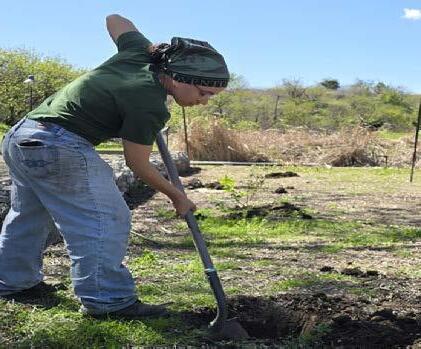
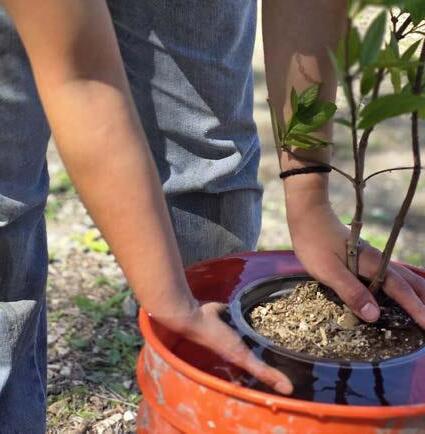
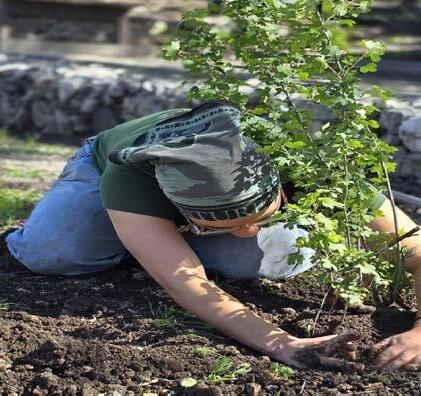
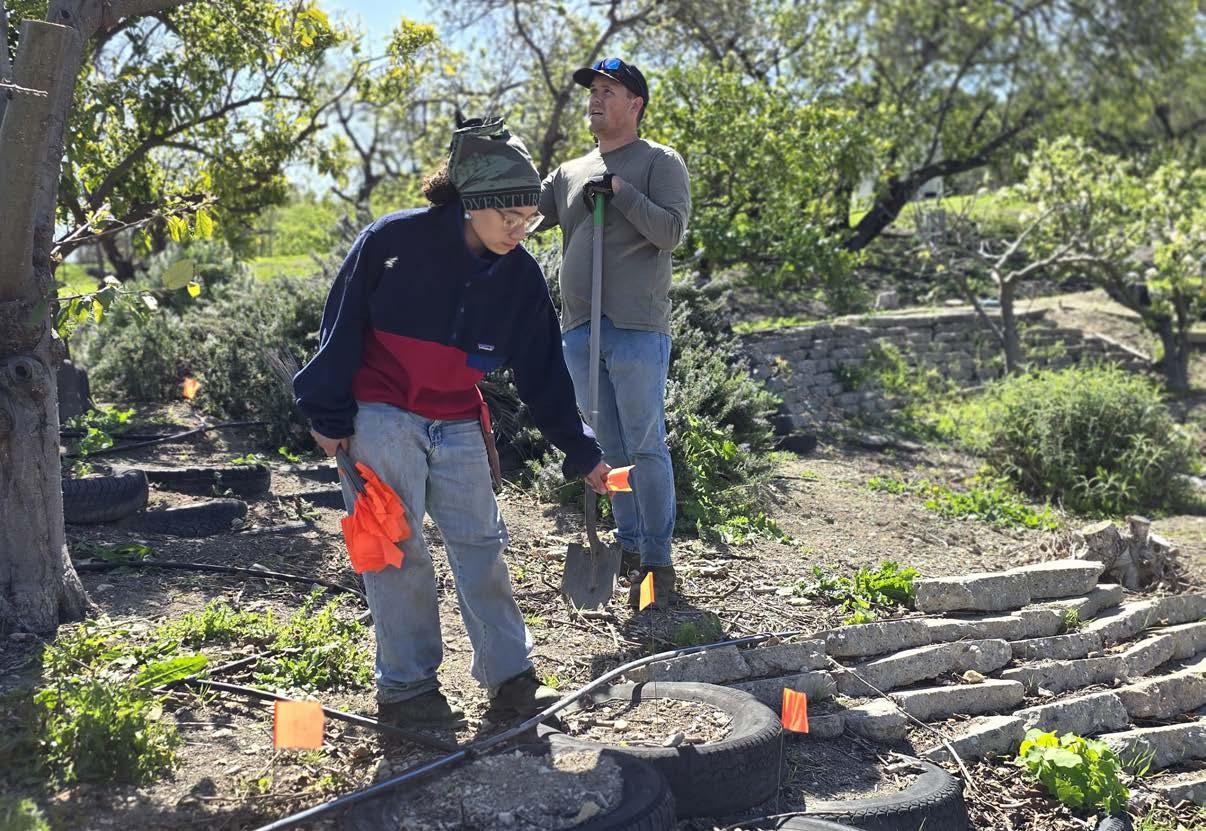
THANK YOU









































































